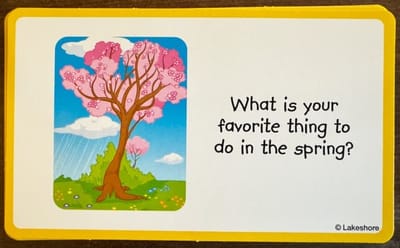Even though it’s way up there on Bloom’s Taxonomy, the “Evaluate” level can easily lead to fluffy, low-thinking questions. But we want to ask interesting questions that make our students think (and that give us something interesting to read!).
Beware Pure Opinion Questions
Consider a question like this:
Which is your favorite planet?
This question doesn’t prompt the kind of interesting thinking I want from the top of Bloom’s Taxonomy. Students can blurt out any planet with any justification. “I like Mars because it’s red.” or “I like Mercury because it’s first.”
It’s a pure opinion question. Let’s see how we can improve it!
Add Criteria
Our first question is dull. It’s too broad. Let’s sharpen it with criteria.
- Which is the most surprising planet?
- Which planet is most valuable?
- Heck, even “Which planet is your least favorite?” would be sharper, I think.
Do you see how these sharpened questions promote a new style of thinking? All we had to do was change “favorite” into more specific criteria.
Pair Criteria with a Perspective
Now, let’s get even sharper. We’ll ask students to think about the criteria using a specific perspective (or two).
- Which is the most useful planet to 👓 a geologist? How would it be different for 👓 an astronomer?
- Which planet is most valuable to an author who writes fiction? Which would be most valuable to a non-fiction writer?
- Which planet would be an astronaut’s least favorite?
These sharper questions will make your students pause and (yes) THINK. We’ll get that wonderful moment of silence as kids look up the ceiling and ponder.
Limit Choice
When we want students to go deeper, we need to reduce the breadth of our questioning. In other words, if you want to go deep, you have to get narrow. So let’s restrict students to three choices:
Which of these planets would most valuable to a non-fiction writer: Jupiter, Mars, or Neptune?
Now that’s a sharp question! I’d be pretty interested to read my students’ responses.
Examples
Consider the difference in thinking required from:
- “What’s your favorite animal?” ➡ “Which mammal might a farmer consider the most dangerous?”
- “What’s better, fractions or decimals?” ➡ “When would a chef find fractions more useful than decimals? How about the other way around?”.
- “What’s the best country” ➡ “Which country would be most interesting to a painter? Portugal, Vietnam, or Tunisia?” (Later follow up with: “What would a musician think?”)
Note how these questions allow for a range of responses. Your most brilliant students have room to go deep.
A Kindergarten Example
My kindergarten aged child got this question:

We could change this to:
- What is the most dangerous thing a farmer has to do in Spring?
- Which vacation is better in Spring than Summer? Who would disagree with that?
- What would be Stuart Little’s favorite Springtime chore?
Believe me, young master Byrd had much more to say about these topics than the bland “What’s your favorite thing to do in spring?”
Always Ask Sequences
Finally, for students to successfully answer these questions, we must build them into a thoughtful sequence of scaffolded prompts. We cannot jump straight to evaluate or our students answers will be all over the place. Students need to remember the basic facts. They need to compare and contrast or form some categories. Only then are they going to be ready to dig deep into an evaluate-level question.
- Jot down at least ten facts about each of these three plants: Mars, Jupiter, Neptune.
- What key fact makes each of these planets unique?
- Which planet would an author of fiction find most valuable?
- How would a journalist disagree with that author?
Always ask questions in a scaffolded sequence. You’ll get much better responses. Read more about that here!
Related Videos For Byrdseed.TV Members

